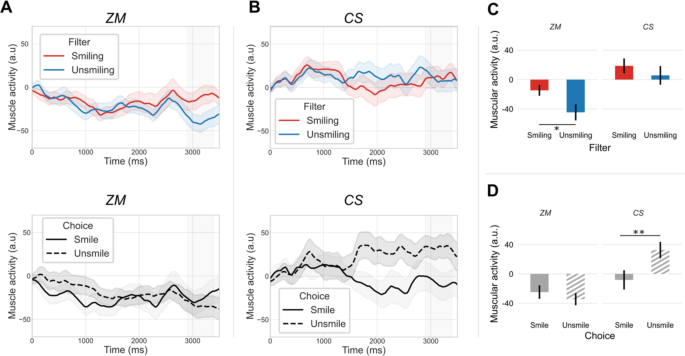Emotions play a crucial role in our daily lives, shaping our social interactions and experiences. But how exactly do we pick up on and respond to the emotional cues of others? A fascinating new study has shed light on this intriguing question, revealing the intricate dance between facial expressions, autonomic nervous system responses, and the underlying cognitive processes involved in emotional contagion.
The researchers, led by Annabelle Merchie, Zoé Ranty, Nadia Aguillon-Hernandez, Jean-Julien Aucouturier, Claire Wardak, and Marie Gomot, combined cutting-edge techniques to unravel the complex mechanisms behind how we react to and internalize the emotional states of those around us. By measuring facial muscle activity and pupil dilation, they were able to distinguish between the automatic, implicit responses and the more deliberate, explicit appraisal of emotional cues, particularly in the context of vocal smiles.
Emotional Contagion: The Automatic and Implicit Response
Emotional contagion is the tendency to rapidly and automatically mimic and synchronize with the emotional expressions of others. This process is believed to be a fundamental part of our social cognition, allowing us to understand and share the feelings of those around us. However, the interplay between the different components of emotional contagion – the emotional state and the corresponding facial motor response – has been a topic of ongoing debate.
The researchers used a clever paradigm to tease apart these different aspects of emotional contagion. They presented participants with sentences that had been artificially modified to convey a subtle “vocal smile” or a more neutral expression. By measuring the activity of the Zygomaticus major (ZM) muscle, which is responsible for the upward movement of the corners of the mouth during a smile, the researchers were able to detect an automatic, implicit response to the vocal smile, even when participants did not consciously identify the emotional cue.
The Role of Explicit Appraisal
In contrast, the activity of the Corrugator supercilii (CS) muscle, which furrows the brow during a frown, reflected the participants’ explicit judgment of the emotional content of the sentences. This suggests that while the emotional state can be triggered automatically, the conscious appraisal of the emotion can further modulate the motor response.
The researchers also examined the autonomic nervous system’s response to the emotional stimuli, as measured by pupil dilation. They found that the pupil dilated more in response to emotional sentences compared to neutral ones, indicating an early, implicit emotional response. Interestingly, the pupil dilation was also influenced by the valence of the emotion, with unsmiling sentences eliciting a stronger response than smiling ones.
Integrating Implicit and Explicit Processes
By combining these physiological measures, the researchers were able to paint a more comprehensive picture of the emotional contagion process. The early pupil dilation in response to emotional stimuli suggests that the emotional state is triggered automatically, independent of any conscious appraisal. However, the later modulation of pupil dilation and the explicit motor response in the CS muscle indicate that the explicit judgment of the emotion can further reinforce and shape the emotional response.
Implications and Future Directions
This innovative study has important implications for our understanding of how we perceive and internalize the emotions of others. The findings suggest that emotional contagion involves a complex interplay between automatic, implicit processes and more deliberate, explicit cognitive appraisal. This knowledge could have applications in fields ranging from social psychology and neuroscience to the development of more natural and responsive human-computer interfaces.
The researchers also highlight the potential for this paradigm to be used in the study of clinical populations, such as individuals with autism spectrum disorder, who may exhibit atypical patterns of emotional contagion. By gaining a deeper understanding of the underlying mechanisms, researchers and clinicians may be better equipped to develop targeted interventions and support strategies.
As we continue to unravel the mysteries of human emotion and social cognition, studies like this one remind us of the remarkable complexity and sophistication of our emotional lives. By combining cutting-edge techniques and innovative experimental designs, researchers are shedding new light on the intricate dance of facial expressions, autonomic responses, and cognitive processes that shape our experience of the world and our connections with others.


Author credit: This article is based on research by Annabelle Merchie, Zoé Ranty, Nadia Aguillon-Hernandez, Jean-Julien Aucouturier, Claire Wardak, Marie Gomot.
For More Related Articles Click Here
